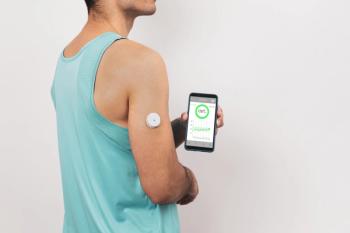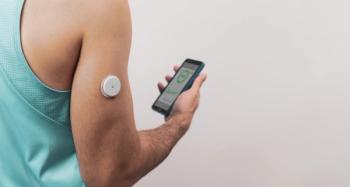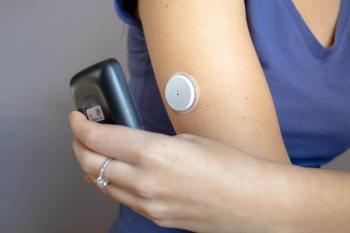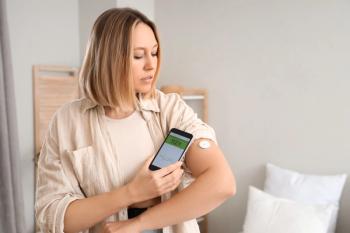
Continued Glucose Monitoring for Diabetes in Noncritical Care Hospital Settings
For noncritically ill hospitalized patients with diabetes, CGM is a reliable tool to improve glycemic control. However, more randomized studies are needed to assess these results in diverse populations.
The use of continuous glucose monitoring (CGM) in noncritical care hospital settings may improve glycemic control and reduce the length of stay for patients with type 1 or type 2 diabetes mellitus, according to an expert opinion published in Nutrition, Metabolism, and Cardiovascular Diseases.1
While data on CGM in outpatient settings continues to support improvement in glycemic control and reduction of hypoglycemic burden, data in hospital settings is limited, especially in the non-intensive care unit (non-ICU) setting. To address these knowledge gaps, a team of investigators from Italy aimed to highlight a practical model of how CGM can be utilized in a hospital setting. The model included CGM from hospital admission to hospital discharge.
In Italy, approximately 1 in 6 patients with diabetes is hospitalized at least once a year. The average hospitalization rates among patients with diabetes are 7 times greater than hospitalized patients without diabetes. In addition, 30% of patients who are discharged from non-ICU care require additional hospitalizations.
Complications in management of hospitalized patients can be due to difficulty in maintaining target blood glucose levels, which can precipitate infections, exacerbated comorbidities, perioperative and perioperative complications, lengthened hospital stays, and mortality.
Point-of-care blood glucose testing is the foundation of glycemic control in the hospital setting and in adjusting insulin therapy, as recommended by national guidelines. This monitoring method is recommended bedside in hospitalized patients prior to meals and at bedtime, or every 4 to 6 hours for patients who are not eating or on continued enteral/parenteral feeding. “However, this approach fails to provide a complete assessment of the 24-hour glycemic profile and in particular, to correctly detect hypoglycemia, especially nocturnal or asymptomatic episodes,” the authors noted. They also added that the use of CGM in non-ICU patients would provide better glucose control and more data to evaluate, while also providing the direction and magnitude of glycemic changes.
Real-time CGM, flash glucose monitoring, and intermittently scanned CGM are available CGM systems that can be utilized in the hospital setting. Compared with the standard point-of-care glucose testing, some benefits of CGM in the non-ICU setting include increased glucose monitoring frequency without disturbing the patient, reduced pain and discomfort, improved glycemic control with greater prediction and detection of hyper- and hypoglycemia, reduced nursing exposure to highly contagious infectious diseases, and decreased time requirements for obtaining blood glucose values.
Some limitations included a lack of approval for inpatient use by regulatory agencies, sensor drift and requirements for blood glucose calibration depending upon the CGM system, and potential compromise of glucose accuracy from concurrent medication or substance use.
Of the few studies that have been conducted on the utility of CGM systems in non-ICU hospital settings, current research suggests that this technology is reliable for hospital use and can improve glycemic monitoring in noncritically ill patients with diabetes, but “additional, later randomized studies in more diverse population are needed to establish efficacy and safety for stand-alone use,” the authors added.
The investigators proposed a practical model of how to implement CGM in the hospital setting from admission to the ward to patient discharge. Prior to implementing CGM, it is necessary to establish and train a CGM management team within the hospital that will be able to select, educate, and manage patients from admission to discharge.
The first step in the implementation of CGM in a non-ICU setting is patient selection and sensor insertion. Selection criteria include patient characteristics, such as insulin-treated patients, individuals with hyperglycemia, patients who need corticosteroid treatment, patients with significant glucotoxicity, and patients with COVID-19. Sensor insertion, as well as assessment of transmitter and receiver/reader characteristics, are also included in the first step. Finally, point-of-care blood glucose testing can be limited, but is advisable twice-daily.
The second step of the practical model is the first diabetes consultation, which includes alarm setting to individualized glucose targets, and CGM glucose readings that can be detected in situations such as before meals, at bedtime, and after oral corticosteroids administration.
The third step of the practical model is comprised of all additional diabetes consultations, in which the CGM manager/diabetologist reviews the glucose data and adjusts the treatment according to these values.
The fourth step is the hospital discharge and follow-up, at which time the patients and caregivers will be re-instructed on how to use CGM at home. They will also be informed on how to adjust insulin doses according to their glucose values. Scheduling a follow-up visit is also advisable 1-2 weeks after discharge.
“We believe that the emerging use of CGM in the noncritical care setting may be useful in increasing the efficacy of hospital care and reducing the length of stay for patients with diabetes while improving glycemic control,” the authors noted. They added that that the use of a structured CGM hospital protocol “can favor the implementation of the CGM in the hospital, help to identify the advantages of the systems and patients who may benefit from its use, and reduce the time for data interpretation.”
“However, further research is needed to quantify the changes to nursing workflow, the burden of implementation, and the associated economic implications,” concluded the investigators.
Disclosure: Some authors note conflicts of interest and receive industry compensation.
Reference
1. Irace C, Coluzzi S, Di Cianni G, et al. Continuous glucose monitoring (CGM) in the non-ICU hospital setting: the patient’s journey. Nutr Metab Cardiovasc Dis. Published online July 6, 2023. doi:10.1016/j.numecd.2023.06.021
Newsletter
Pharmacy practice is always changing. Stay ahead of the curve with the Drug Topics newsletter and get the latest drug information, industry trends, and patient care tips.


















































































































